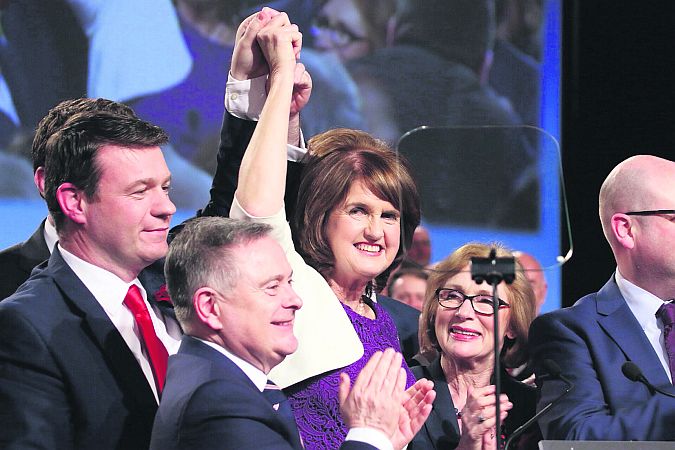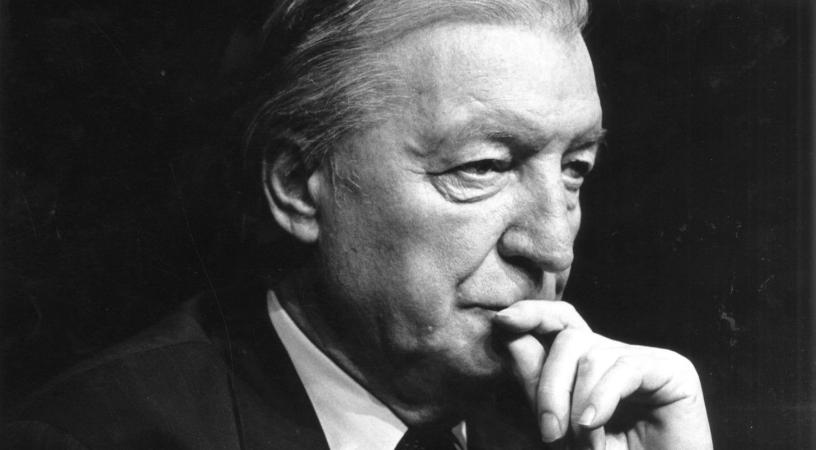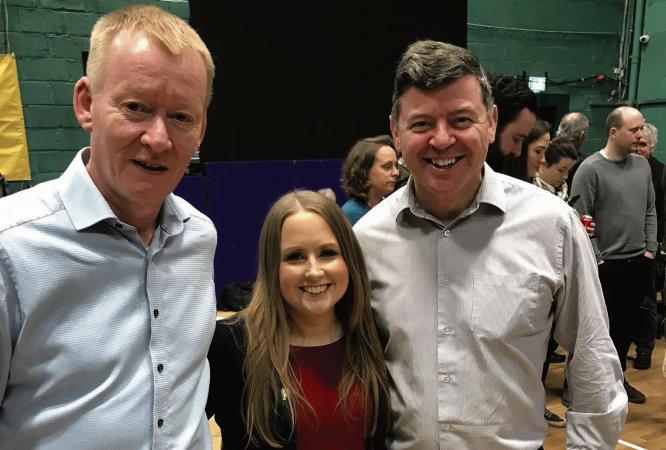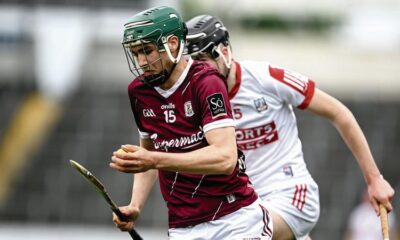Political World
Labour puts the boot in to show they’re on the ball

World of Politics with Harry McGee – harrymcgee@gmail.com
Former Irish soccer international and manager Mick McCarthy was once challenged on why he cleared the ball over the touchline so often while defending.
“Well, I’ve never seen anybody score from Row G,” was his laconic reply.
McCarthy’s method for keeping the opposition at bay wasn’t pretty. But it was effective.
At their party convention at the weekend, Labour went big on the velvet when it came to presentation and even bigger on the bludgeon when dealing with their opponents.
Alan Kelly, unsurprisingly, led the charge, with a couple of energetic “put ‘em under pressure” speeches that would have done Big Mick and Jack Charlton proud.
Leader Joan Burton might have acquired a new soft voice but she is still a hard chaw – she baited Fianna Fáil all weekend with a slightly mischievous suggestion that the party now favours increased taxes for everybody earning over €35,000. And her keynote speech left no hostages to fortune.
It was left to the rather less dramatic Brendan Howlin to spell out the detail of how Labour will frame its main messages.
Howlin outlined plans for a forum that will consider pay, tax and overall spending. It’s part of the new “national economic dialogue”, which is not social partnership. Erm, how so? It sounds very much like it but this time around it will all be held in open, and not behind closed doors as social partnership was.
Back in 2007, Enda Kenny said that year’s election would be a referendum on the health services.
It wasn’t. It was about the economy. So will next year’s.
Or to be more accurate, there are many reasons why people vote how they do. They include social issues like same sex marriage, or child care costs, or climate change, or their vestigial republicanism (1916 and all that).
Still, the economy trumps all. Howlin’s promise of a forum and pay increases will appeal to the party’s base in the public sector. As will Fine Gael’s promises of lower taxes appeal to theirs.
It’s strange that the British general election is only a few months away, yet there seems to be a greater urgency among the political parties here.
In opposition, the watchword of every politician is reform. But as we have seen so often, the MiWadi effect occurs as soon as they get into power, everything becomes “dilute to taste”.
It’s not to say it will not be different this time. The old certainties of the two party hegemony are a thing of the past.
In reality the support for Fine Gael and Fianna Fáil has slowly been eroded over 30 years but that was partly masked by support for Fianna Fáil during the good years, when it was see as the natural party of government.
All of that changed in 2011 when the political certainties was turned on its head. Is that change permanent. Yes and No. I think that Fine Gael and Fianna Fáil will probably re-establish themselves as the two big parties after the next election but not with the big gap between them and everybody else.
Sinn Féin is a big player now and is here to stay, with a long-term aim of displacing Fianna Fáil as the leading republican party. At that stage its present left-wing leanings will have dissipated.
For more, read this week’s Connacht Tribune.
Connacht Tribune
The fine art of good timing when it comes to elections

World of Politics with Harry McGee
Academically, politics is described as a science. But in the real world, it’s more of an art – and one of the big decisions a Government has to make is to decide when to call an election.
Will they see out the full term, or will they go early – either to mitigate the damage they will ship, or to secure a victory before things go awry, or the economy takes a dip, or some kind of controversy erupts?
Timing is everything.
And there’s a bit of art to that – not to mention a lot of luck. If you call it early and win big, you’re a genius. If you call it early and lose, you are the political version of the village fool.
Charlie Haughey was a poor judge of the public mood. Twice he called snap elections and on both occasions they backfired. Haughey succeeded Jack Lynch as Taoiseach in late 1979 and did not – technically – have his own mandate. He tried to remedy that by calling an election in 1981. But it recoiled. Ray MacSharry warned him not to hold it during the H Block hunger strikes when republican prisoners were dying each day. He did not listen to the advice and found himself out of office.
After his return to power in 1987, Haughey tired of presiding over a minority government that kept on losing votes in the Oireachtas (the opposition won nine private members motions).
So he called a snap general election and it backfired. Fianna Fáil lost seats and had to broker a coalition deal with the Progressive Democrats and his long-standing political adversary Dessie O’Malley.
For more, read this week’s Connacht Tribune.
Connacht Tribune Digital Edition App
Download the Connacht Tribune Digital Edition App to access to Galway’s best-selling newspaper.
Click HERE to download it for iPhone and iPad from Apple’s App Store, or HERE to get the Android Version from Google Play.
Or purchase the Digital Edition for PC, Mac or Laptop from Pagesuite HERE.
Get the Connacht Tribune Live app
The Connacht Tribune Live app is the home of everything that is happening in Galway City and county. It’s completely FREE and features all the latest news, sport and information on what’s on in your area. Click HERE to download it for iPhone and iPad from Apple’s App Store, or HERE to get the Android Version from Google Play.
Connacht Tribune
Inch protest arguments are more subtle than Oughterard

World of Politics with Harry McGee
I was cycling down Mount Street in Dublin on Tuesday. It’s a wide esplanade that links the Grand Canal with Merrion Square. The street is a mixture of fine Georgian buildings and modern office blocks.
About half-way down is the office of the International Protection Office, which deals with asylum seekers who have arrived in the country.
Needless to say, the office has been overwhelmed in the past year. Besides an estimated 80,000 refugees who have arrived from Ukraine, there have been about 20,000 people from other parts of the world who have arrived into Dublin (mostly) claiming asylum.
The numbers peaked around Christmas, but they have been falling a little. In January, more than 1,300 people arrived seeking asylum but the numbers fell back to 831 and 858, in February and March respectively.
They are still huge numbers in a historical context.
So back to my cycle on Tuesday. I knew that some asylum seekers were camping outside the International Protection Office, but I was taken aback by how many. There were six tents lined up on the pavement directly outside. Then on the ramp that led down to the basement carpark on the side of the building, there were about another 20 tents.
It looked like what it was, a refugee camp in the middle of Dublin’s business district. If you pan out from Mount Street, you will find tents here and there in nearby streets and alleys. There were a good few tents in an alleyway off Sandwith Street about 500 metres away.
For more, read this week’s Connacht Tribune.
Connacht Tribune Digital Edition App
Download the Connacht Tribune Digital Edition App to access to Galway’s best-selling newspaper.
Click HERE to download it for iPhone and iPad from Apple’s App Store, or HERE to get the Android Version from Google Play.
Or purchase the Digital Edition for PC, Mac or Laptop from Pagesuite HERE.
Get the Connacht Tribune Live app
The Connacht Tribune Live app is the home of everything that is happening in Galway City and county. It’s completely FREE and features all the latest news, sport and information on what’s on in your area. Click HERE to download it for iPhone and iPad from Apple’s App Store, or HERE to get the Android Version from Google Play.
Connacht Tribune
Sinn Féin hunt for seats in ‘locals’ across Galway

World of Politics with Harry McGee
God that was a dramatic and historic weekend in England, wasn’t it? So much excitement, so much change, so much hype, so much out with the old and in with the new, and what looks like the coronation of a new leader. Yes, the local elections in Britain were something else weren’t they!
Apologies for not going on about King Charles III but the contract I signed when I became a lifelong republican forbids me to discuss the topic!
I know the British local elections sound a bit boring by comparison, but the results were stunning.
The Conservatives lost nearly 1,000 seats, the British Labour Party gained almost 500 and both the Lib Dems (with 350 gains) and the Greens (gaining over 200) also had amazing days at the polls.
It was Labour’s best day since 2002 but its victory was only partial. The Greens and the Lib Dems actually made gains at the expense of Labour in more affluent areas, and in parts of Britain where there were high numbers of graduates.
It was in the Red Wall constituencies in the North of England where the Labour recovery was strongest. These are working class constituencies with pockets of deprivation where people voted for the Labour Party forever. But all of those constituencies voted for Brexit and then voted for the Tories in the next general election. Labour is now winning back some of those votes.
Local elections are classified as second-tier elections which essentially means – from a national perspective – they are not life-or-death affairs, and not everything turns on them. Of course, it’s really important to have good local representation. But they are not an amazing weather vane for who rules the country.
For more, read this week’s Connacht Tribune.
Connacht Tribune Digital Edition App
Download the Connacht Tribune Digital Edition App to access to Galway’s best-selling newspaper.
Click HERE to download it for iPhone and iPad from Apple’s App Store, or HERE to get the Android Version from Google Play.
Or purchase the Digital Edition for PC, Mac or Laptop from Pagesuite HERE.
Get the Connacht Tribune Live app
The Connacht Tribune Live app is the home of everything that is happening in Galway City and county. It’s completely FREE and features all the latest news, sport and information on what’s on in your area. Click HERE to download it for iPhone and iPad from Apple’s App Store, or HERE to get the Android Version from Google Play.












